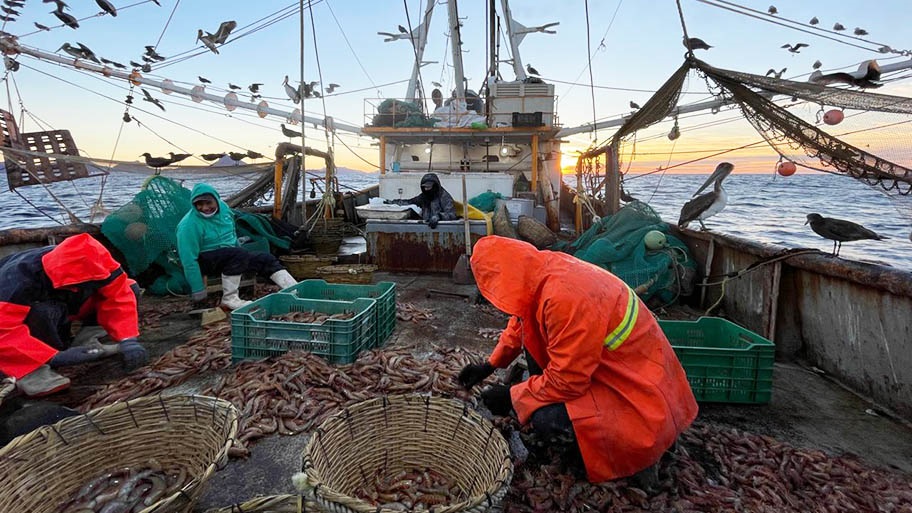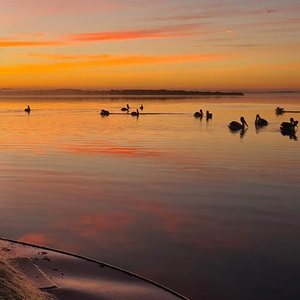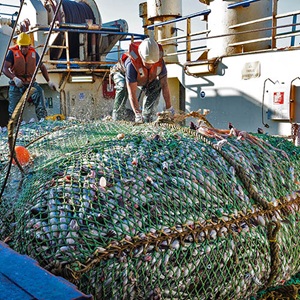This economically important Mexican shrimp fishery is systematically working to close sustainability performance gaps so it may reach the gold-standard for its fishing operations.
- Making further improvements to stock assessment protocols, harvest strategy and biological data of the target species
- Implementation and continuation of monitoring for data driven management
- Environmental impacts assessment of bottom trawling in the fishing range
- Improving awareness of environmental sustainability requirements with fishers, stakeholders and the community
Start date: April 2025
US$63,315
Transition Assistance Fund
Awardee
Fishery
Mexican North Pacific brown shrimp bottom trawl fishery
A fishery of local and national economic importance
The Mexican North Pacific brown shrimp bottom trawl fishery targets the brown or yellowleg shrimp (Farfantepenaeus californiensis) in the Pacific waters off Baja California. The fishery is one of Mexico’s most important: its catch has the highest economic value, and the fishery generates significant local employment.
The fishing vessels are equipped with turtle and fish exclusion devices to reduce their impacts on non-target and endangered species. The fishery has a long history of working with scientists and technical advisors for sustainable management and effective practices. Its activities have been fortified by strong engagement with fishers, stakeholders and the community.
The fishery part of the MSC Improvement Program and has been in a Fishery Improvement Project (FIP) since 2023. During this time, it has consolidated its project goals, received positive annual audit results on its environmental performance, and improved its work plan.
To build on its achievements to date, the fishery has been awarded its second Transition Assistance Fund grant. The grant will help the fishery achieve best practice levels in all areas of its fishing operations, particularly around the sustainability of the stock. The fishery aims to move towards full assessment against the MSC Fisheries Standard in 2027.

Reaching best practice levels
The project’s targets are centred around improving critical areas of stock management, environmental impacts, regulatory compliance and stakeholder collaboration. The fishery will review the stock’s status as well as harvest control rules and strategy with fisheries authorities, scientists and industry representatives. This will ensure the fishery continues to operate within sustainable limits, maintaining healthy shrimp population levels.
Consistent data-driven monitoring is essential for assessing and controlling fishing pressure and ecosystem health. The grant will aid regular collection and analysis of catch and bycatch data to establish adaptive management and strengthen accountability.
An Environmental Impact Assessment will be made for the fishing areas to measure and minimise trawling impacts on seabed habitats and non-target species.
The project will also evaluate the fishery management system and follow a decision-making protocol. It will establish explicit objectives to ensure operations are well regulated, adaptive and responsive to changing conditions. A structured approach of this kind is essential for compliance with local, regional and national regulations. With an increased awareness campaign, the fishery aims to empower stakeholders to take responsibility for sustainability efforts and build a foundation for ongoing compliance.
“This funding will support and help develop strategies that will provide crucial information that contribute to ocean science and will ensure the fishery’s dynamics and any effects on the environment and ecosystem are managed sustainably.”
In Transition to MSC Project Implementer
Related projects

Indonesia longline tuna and swordfish: Enhancing observer programs

Australia Lakes & Coorong: Improving harvest strategies


